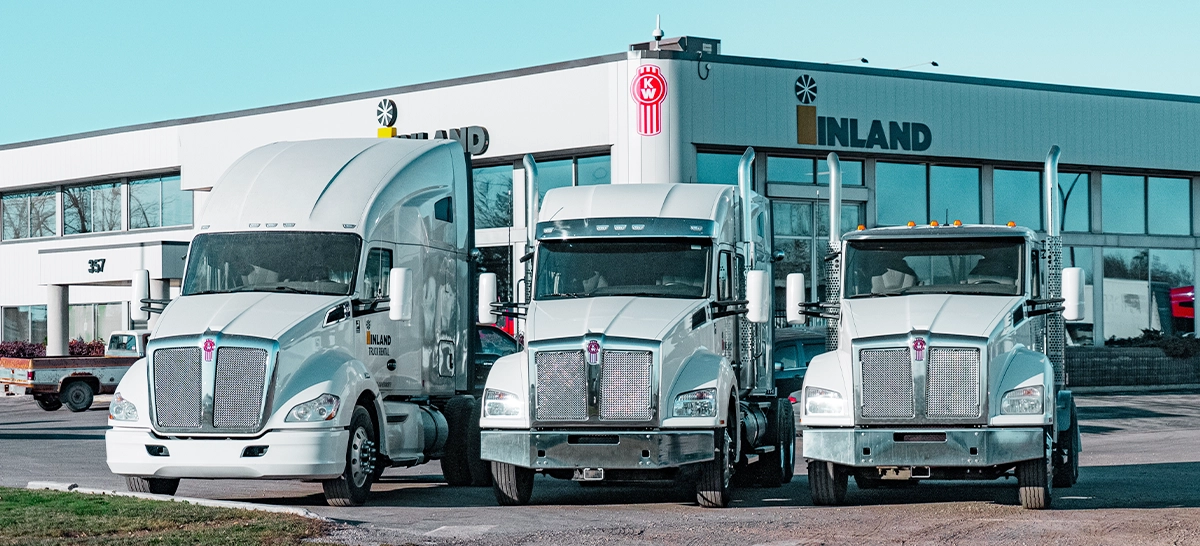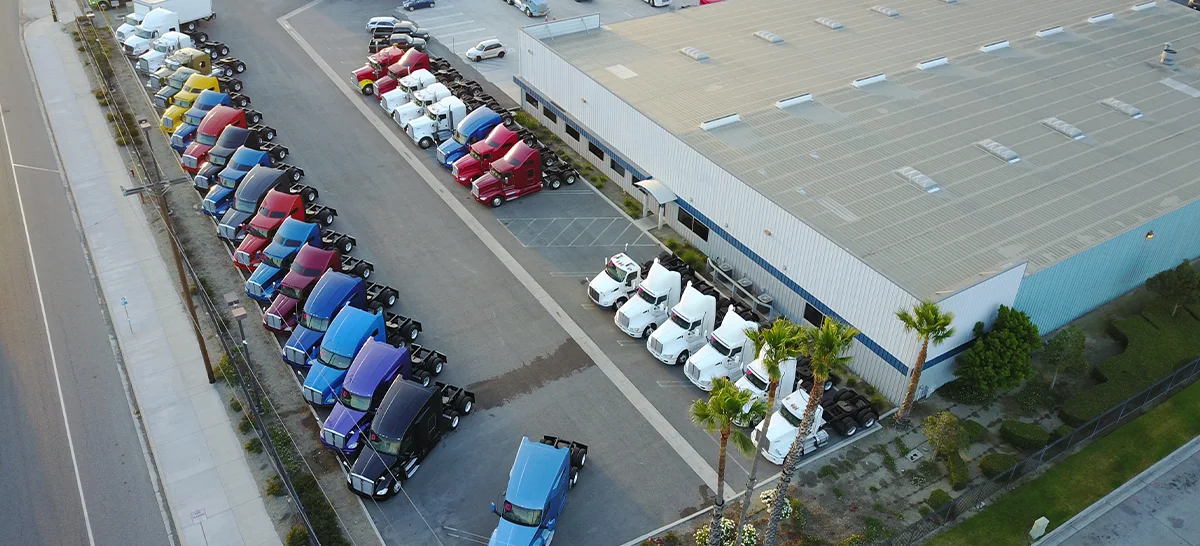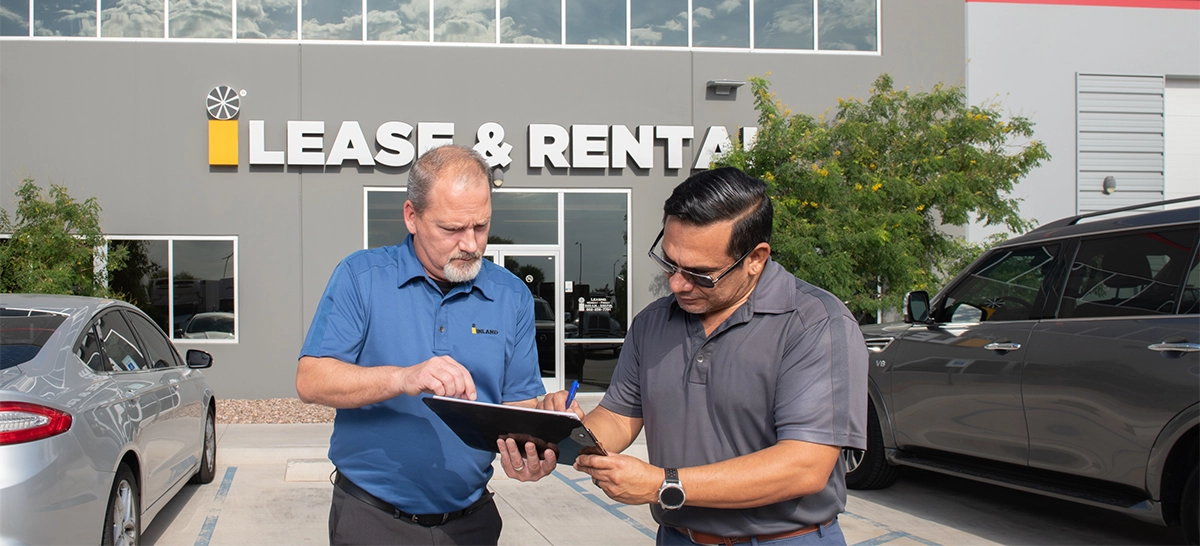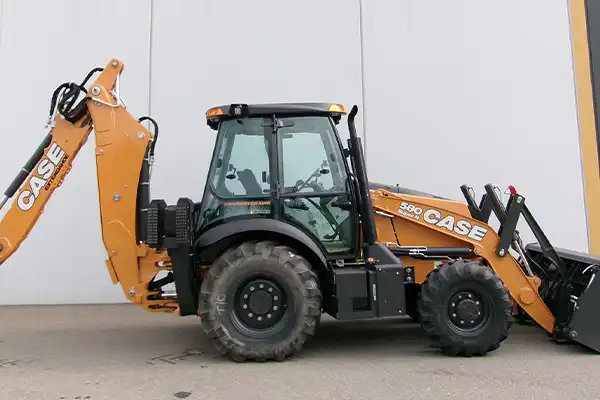
For any business that relies on transportation, the decision of whether to own or rent your semi-trucks is a critical one with far-reaching financial and operational implications.
Traditionally, people viewed owning a fleet as a sign of stability and a long-term asset. However, in today’s dynamic and often unpredictable market, the tide is turning. More fleet managers and independent owner-operators are finding the benefits of a flexible semi-truck rental model.
In this guide, we’ll explore why more companies are renting semi-trucks instead of buying them. We’ll look past the sticker price to show you the hidden costs of owning a truck. You’ll also see how renting gives you the flexibility to grow, cuts down on expensive downtime with included maintenance, and frees up your money to use in other parts of your business.
Whether you’re a seasoned fleet manager looking to optimize your budget or a driver considering your next move, this article will provide the insights you need to determine if a semi-truck rental strategy is the smart move for your future.
Unpacking the Total Cost of Ownership: Why Buying Isn’t Always Better
The allure of owning a fleet of semi-trucks is clear. It represents a tangible asset on your company’s balance sheet and a sense of control over your operations. However, the initial purchase price is just the tip of the iceberg regarding the true cost of ownership. Looking closely at the costs shows that buying might not be the best financial choice for your business.

The Hidden Costs of Owning a Semi-Truck
Beyond the multi-thousand-dollar down payment and subsequent monthly loan installments, owning a semi-truck comes with a host of ongoing and often inconsistent expenses that can significantly impact your bottom line.
Depreciation: The Silent Fleet Killer
One of the most significant, yet often overlooked, costs of owning a semi-truck is depreciation. The moment a new truck drives off the lot, its value begins to plummet. This depreciation continues year after year, meaning the asset you invested heavily in is constantly losing value.
For fleet managers, this can be a major financial drain, especially when it comes time to sell or trade in older vehicles. The resale value may be a fraction of the initial investment, making it difficult to recoup your capital.
A semi-truck rental strategy avoids this problem. You do not have to bear the financial burden of a depreciating asset. This helps companies keep a modern fleet with the latest technology. They can avoid the constant financial hit of depreciation.
Navigating the Maze of Maintenance and Repairs
When you own a truck, every oil change, tire replacement, and unexpected breakdown is your financial responsibility. These costs can be substantial and are often unpredictable, making it challenging to budget for the year. A major engine or transmission failure can result in tens of thousands of dollars in repair bills, not to mention the loss of revenue due to downtime.
Furthermore, managing a preventative maintenance schedule for an entire fleet requires significant administrative resources and expertise. This is a significant reason why many businesses opt for a semi-truck rental with maintenance included.
Rental vs. Ownership: A Head-to-Head Cost Analysis
To truly understand the financial implications, it’s essential to compare the costs of renting and owning side-by-side.
Upfront Investment and Long-Term Financial Commitment
Purchasing a new semi-truck can require a substantial down payment, often 10-25% of the total cost. This uses a lot of money that could go to other important business needs. These needs may include marketing, technology, or hiring more drivers.
Renting, on the other hand, typically requires a much smaller initial sum, often just a security deposit and the first month’s payment. This lower barrier to entry makes it an attractive option for startups and growing businesses.
The All-Inclusive Nature of Semi-Truck Rental Agreements
A significant advantage of renting is the predictable, all-inclusive monthly payment. These agreements often bundle in the cost of maintenance, repairs, and even roadside assistance. This fixed cost makes it much easier for fleet managers to budget and forecast their transportation expenses accurately.
If you own a truck, you’ve got the loan payment, plus a lot of other unpredictable expenses that can pop up. That’s why renting is becoming so popular—it’s comforting to know all your big costs are bundled into a single, steady payment.

Flexibility and Scalability: The Twin Pillars of Modern Fleet Management
In the fast-paced world of logistics and transportation, the ability to adapt to changing market conditions is paramount. The rigid nature of fleet ownership can be a significant hindrance to agility. This is where the flexibility and scalability of a semi-truck rental strategy really stand out. It allows businesses to change quickly and efficiently.
Adapting to Fluctuating Market Demands with Rentals
Market demands are rarely static. They ebb and flow with seasonal trends, economic shifts, and unforeseen events. A company with a fixed fleet size can find itself in a difficult position during these fluctuations.
Scaling Up for Seasonal Peaks and Unexpected Opportunities
Consider a logistics company that experiences a surge in demand during the holiday season. If they own their fleet, they might not have enough capacity for all the extra business. This can lead to missed revenue opportunities. With a rental model, they can quickly and easily add trucks to their fleet for the duration of the peak season and then return them once demand subsides.
This ability to scale up on-demand also applies to unexpected opportunities, such as landing a large, short-term contract. A commercial truck rental for seasonal business allows companies to capitalize on these opportunities without the long-term commitment of purchasing additional vehicles.
Downsizing Your Fleet Without Financial Penalties
Conversely, during a market downturn or a slow season, a company with a large, owned fleet is still saddled with loan payments, insurance, and other fixed costs for unused assets. This can be a significant financial drain.
A rental strategy allows for easy downsizing. If business slows down, you can simply return the rental trucks, reducing your expenses to match your current operational needs. This flexibility protects your business from the financial strain of maintaining a fleet that is larger than necessary.
Access to the Latest Truck Technology Without the Capital Outlay
The trucking industry is constantly evolving, with new technologies emerging that improve fuel efficiency, safety, and driver comfort. For a company that owns its trucks, upgrading to the latest models can be a costly and time-consuming process. It often involves selling off older, depreciated assets and making a significant new investment. With a semi-truck rental plan, you can regularly have access to a newer fleet with the latest advancements.
This not only improves your day-to-day efficiency and reduces fuel costs but also helps in attracting and retaining top driving talent who prefer to operate modern, well-equipped vehicles. It allows you to stay competitive and benefit from the latest innovations without substantial capital expenditure.
Maintenance, Compliance, and Risk Mitigation: Offloading the Burden
One of the biggest challenges for any company with a fleet of semi-trucks is managing maintenance, ensuring regulatory compliance, and mitigating the risks associated with vehicle downtime. A full-service semi-truck rental agreement can shift these responsibilities from you to the rental provider. This lets you focus on your main business operations.
The 24/7 Support System of a Full-Service Rental Agreement
When you own your trucks, you are solely responsible for their upkeep. This requires a dedicated maintenance team or outsourcing to a reliable but often expensive repair shop. A comprehensive rental agreement, on the other hand, provides a robust support system designed to keep your trucks on the road.
Minimizing Downtime with Proactive Maintenance and Roadside Assistance
Downtime is the enemy of any trucking operation. Every hour a truck is off the road is an hour of lost revenue. Full-service rental providers, such as Inland Kenworth, have extensive networks of service locations and offer 24/7 roadside assistance. We handle all preventative maintenance, ensuring the vehicles are in optimal condition and reducing the likelihood of unexpected breakdowns.
In the event of a mechanical failure, Inland can quickly dispatch a mobile repair unit or provide a replacement vehicle, minimizing the impact on your delivery schedules. This level of support is difficult and costly to replicate for a company managing its own fleet. Knowing that you have a team of experts on standby to handle any maintenance issues provides invaluable peace of mind for fleet managers and drivers alike.
Staying Ahead of Regulatory Changes and Compliance Requirements
The transportation industry is heavily regulated, with a complex web of federal and state laws governing everything from emissions standards to hours-of-service tracking. Staying current with these regulations and ensuring your fleet is compliant can be a full-time job. Inland Kenworth stays on top of these changes. We equip our vehicles with the necessary technology and ensure they meet all current standards.
This is particularly important with the increasing adoption of electronic logging devices (ELDs) and stricter emissions regulations. By opting for a semi-truck rental, you can be confident that you are operating a compliant fleet, reducing the risk of costly fines and penalties. This is a crucial aspect of fleet management solutions with truck rentals.

What to Look for in a Commercial Truck Rental Company
A good rental company should provide many types of vehicles. This includes semi-trucks, box trucks, and other special vehicles to meet different needs. Ensure the rental company provides comprehensive maintenance and support services to keep the trucks in optimal condition.
Look for companies that offer flexible rental terms, including short-term and long-term options, to suit your business needs. Check the company’s reputation and read customer reviews. This will help you see if they are reliable and provide good service. Choose a rental company with transparent pricing and no hidden fees to avoid unexpected costs.
Why Inland Kenworth is a Great Option
Inland Kenworth stands out as a top choice for truck rentals due to its extensive fleet, exceptional customer service, and commitment to quality. Here’s why Inland is the best option for your truck rental needs:
- Diverse Fleet: Inland offers a wide range of vehicles, including medium and heavy-duty Kenworth trucks, ensuring you find the right truck for your specific needs. Our fleet includes:
- Tandem Axle Day Cabs: 80,000 lb gross weight combined, up to 200-gallon fuel capacity, driver air-ride seat, collision mitigation systems, up to 455 HP Cummins Engines, auto & manual transmission.
- 24’ Stake Bed Trucks: Up to 26,000 lb GVW, up to 100-gallon fuel capacity, up to 3000 lb capacity liftgate, body reinforced for forklift loading, curbside door, removable wood stake gates.
- Tandem Axle Sleepers: 80,000 lb gross weight combined, up to 240-gallon fuel capacity, double bunk sleeper, driver air-ride seat, collision mitigation systems, up to 455 HP PACCAR MX-13.
- 24’ Dry Box – Class C & B: Up to 35,000 lb GVW, up to 100-gallon fuel capacity, automatic transmission, E-Track and wood tie-slats, up to 3300 lb capacity liftgate, translucent roof & cargo lighting.
- 20-24’ Reefer Class C & B: 26,000 & 35,000 lb GVW, up to 100-gallon fuel capacity, automatic transmission, up to 3300 lb capacity liftgate, E-Track and wood tie-slats, translucent roof & cargo lighting.
- Comprehensive Maintenance: Inland provides thorough maintenance and support, ensuring their trucks are always in top condition and ready for the road.
- Flexible Rental Options: Inland offers both short-term and long-term rental options, providing flexibility to meet your business requirements.
- Excellent Reputation: Inland has built a strong reputation for reliability and customer satisfaction, backed by positive reviews from numerous clients.
- Transparent Pricing: Inland’s pricing is clear and straightforward, with no hidden fees, making it easier for businesses to budget for their rental needs.
- Kenworth Reliability: Inland exclusively offers Kenworth trucks, known for their reliability and long-lasting performance. Kenworth’s dedication to manufacturing quality and its extensive service network ensure that drivers can find parts and repairs when needed, even in remote areas.
Frequently Asked Questions
The cost to rent a semi-truck for a month can vary widely based on the type of truck (sleeper vs. day cab), its age and specifications, the rental company, and your location. Generally, you can expect costs to range from a few thousand to several thousand dollars per month. It’s best to get quotes from multiple providers for an accurate estimate.
The choice between a long-term semi-truck rental vs lease depends on your specific needs. Rentals offer more flexibility with shorter commitment periods, making them ideal for seasonal work or uncertain contract lengths. Leasing typically involves a longer-term contract (a year or more) but may offer slightly lower monthly payments.
Yes, one of the primary advantages of full-service truck leasing and renting is that comprehensive maintenance and repairs are usually included in the agreement. This helps in minimizing unexpected costs and downtime. Always confirm the extent of the maintenance coverage before signing a contract.
When evaluating a semi-truck rental company, consider their reputation, the age and condition of their fleet, the number of service locations they have, their 24/7 roadside assistance capabilities, and the transparency of their rental agreements. Look for a partner who understands your business needs and can provide reliable support.




